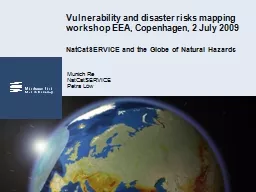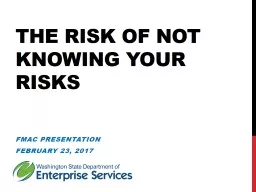PPT-Ways to reduce the risks
Author : trish-goza | Published Date : 2016-07-25
of Crowds and further study of web anonymity By Manasi N Pradhan We have seen the paper Crowds Anonymity for web transactions by Michael K Reiter and Aviel Rubin
Presentation Embed Code
Download Presentation
Download Presentation The PPT/PDF document "Ways to reduce the risks" is the property of its rightful owner. Permission is granted to download and print the materials on this website for personal, non-commercial use only, and to display it on your personal computer provided you do not modify the materials and that you retain all copyright notices contained in the materials. By downloading content from our website, you accept the terms of this agreement.
Ways to reduce the risks: Transcript
Download Rules Of Document
"Ways to reduce the risks"The content belongs to its owner. You may download and print it for personal use, without modification, and keep all copyright notices. By downloading, you agree to these terms.
Related Documents














